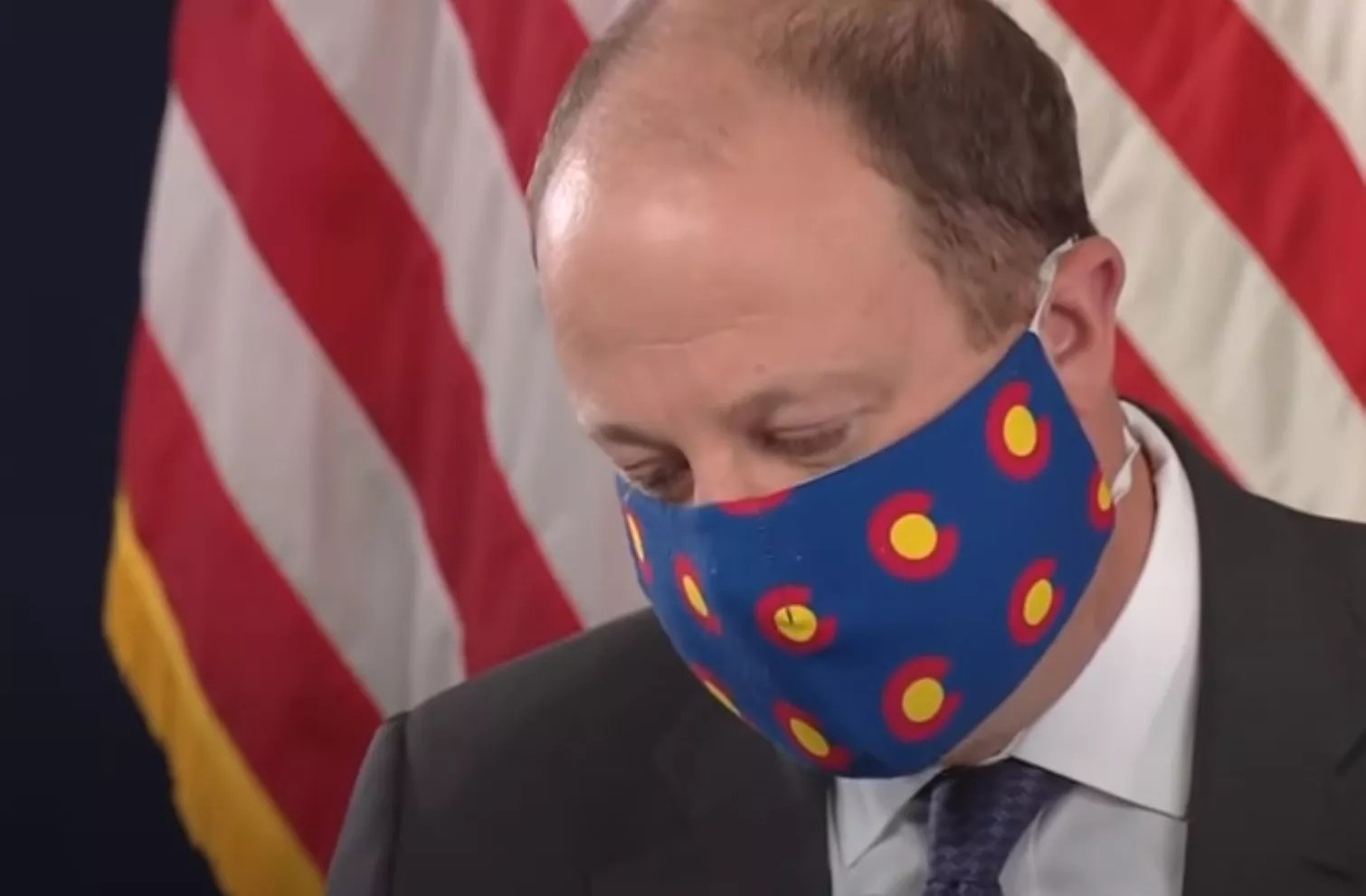

Audio By Carbonatix
An increase in COVID-19 cases in Colorado was feared in the wake of Thanksgiving, but didn’t materialize to any great degree. But during a January 8 press conference, Governor Jared Polis and state epidemiologist Dr. Rachel Herlihy confirmed that over the past few days, there has been a bump in infections related to Christmas, and they acknowledged that there could be another rise as early as next week in connection with New Year’s Eve celebrations.
Polis reported that 3,187 positive cases were reported on January 8, with a total of 4,107 deaths in the state directly attributable to the novel coronavirus since the start of the pandemic. But he also said he was pleased that testing rates, which had lagged over the holidays, are starting to pick up again; more than 50,000 tests were conducted on January 7, and 43,000-plus had already taken place by mid-day on January 8.
Then Herlihy delivered the bad news, confirming that “we are starting to see the impact of the holidays show up in our data,” following a steady decline from peaks established around late November. Nonetheless, most metrics are looking better than they did last month. In mid-December, Herlihy estimated that about one in every 53 people was infected with the virus; today that number is closer to one in 105. Hospitalizations are down, too, sinking below 900 at present – just over half of the 1,600 daily count during the worst of the prior wave.
Even so, Herlihy stressed, “We still have a large percentage of people actively infected and having the potential to transmit” the disease; she also admitted that early vaccine distribution isn’t likely to improve the situation much. (Only about 2 percent of the state’s residents have been given their initial dose of the vaccine so far, and they won’t achieve maximum immunity until receiving a booster shot a few weeks later.) As a result, modeling data shows that following established safety protocols – wearing a facial covering in public, avoiding social interactions with people outside your household and keeping six feet of social distance whenever possible – will be more important to stop the spread than vaccines for at least a couple of months, and likely longer.
When news happens, Westword is there —
Your support strengthens our coverage.
We’re aiming to raise $50,000 by December 31, so we can continue covering what matters most to this community. If Westword matters to you, please take action and contribute today, so when news happens, our reporters can be there.
When the spotlight returned to Polis, he discussed ways that Coloradans age seventy and up – the next vaccination priority – can receive their injections, essentially reiterating information he’d already shared on January 6. He noted that major hospital systems such as UC Health, Denver Health and Centura are actively reaching out to past patients in their respective databases, and smaller medical operations and services are either doing likewise or encouraging individuals to register via their websites. In addition, public-health partners such as Salud are hosting events at which seniors in underserved areas can get doses; one is planned for Aurora in the coming days. But the dizzying variety of options seems likely to confuse many seniors, no matter their level of technical savvy.
Nonetheless, Polis expressed confidence that 70 percent of Coloradans age seventy and up will have received at least their first vaccination by the end of February, depending on the amount of medication shipped by the feds. Colorado officials are planning to get about 70,000 doses each week, but Polis said that some shipments have been smaller than promised. He offered a number of scenarios that might help bridge the gap, including approval of new vaccines, including one from Johnson & Johnson, over the next month, as well as the prospect of making doses of the Moderna vaccine go further by giving a little less of it to people in the 22-to-55 age range. But there’s no telling if any of these scenarios will come to pass.
The first question after the main presentation involved new reports about confirmed cases of the B.1.1.7 COVID variant, which now total three in Colorado. Herlihy said the state is broadening its testing procedures to try and catch more examples of this strain and any others that may develop; in the meantime, her supposition is that B.1.1.7 is spreading in the community, but that it can be combated by mask usage, social distancing and a reduction of social interactions, just like the spread of its more common cousin.
Another question challenged Polis regarding his switching Level Red counties to Level Orange, even though case counts across many parts of Colorado continue to be quite elevated. He responded by pointing out that his administration is trying to strike a balance between health matters and the economic, social and emotional impacts of the virus – and because hospitalizations are down right now, he thinks the move was justified.
No doubt this question will come up again if the 2020 holidays produce a spate of new cases as the first month of 2021 moves along.